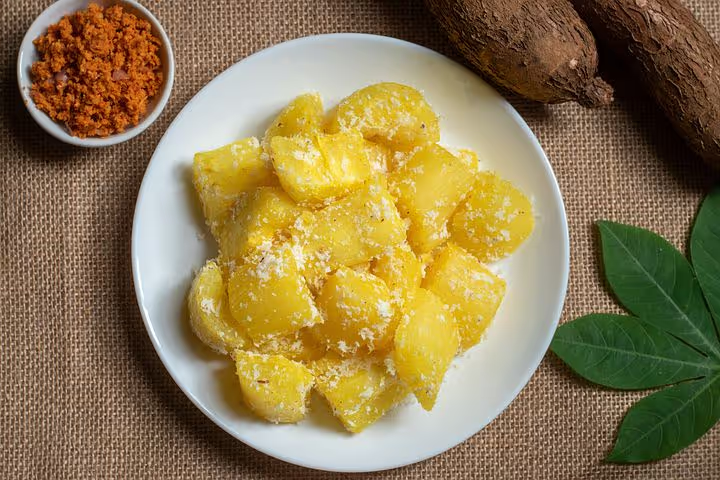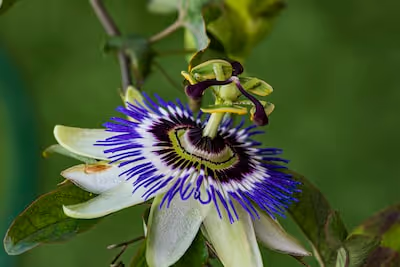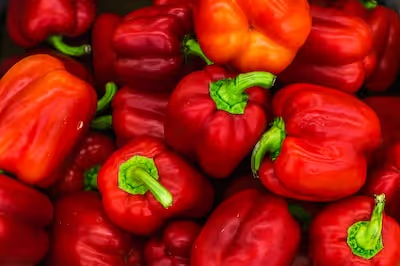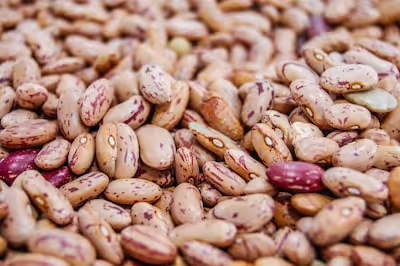Growing Manioc: How to Plant and Harvest Healthy Cassava
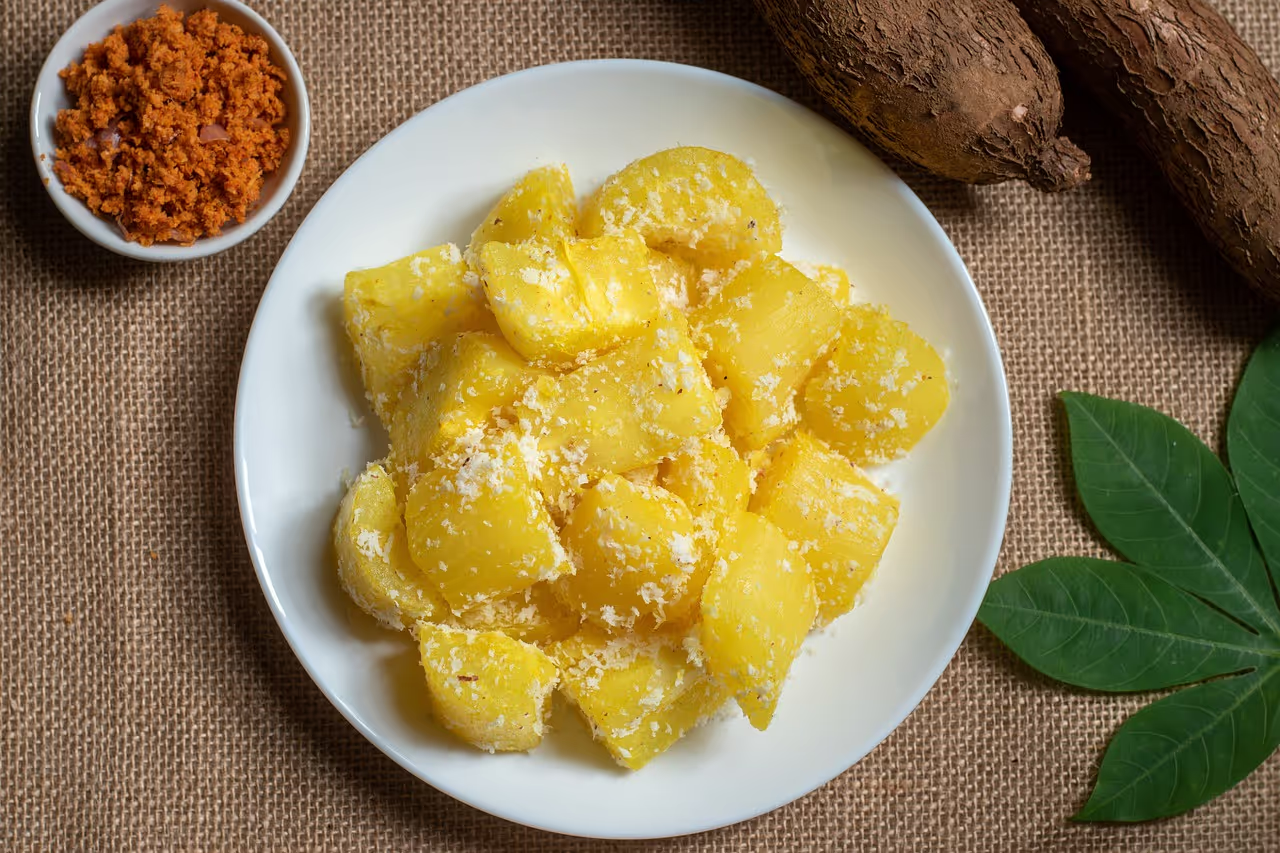
Growing Manioc
Growing manioc gives you hardy, versatile roots that thrive with little fuss. Plant manioc stem cuttings in loose, fertile soil under full sun, then step back and let this tough, drought-tolerant staple do its thing. For an abundant harvest in 8–12 months, follow these simple steps for growing manioc and savor flavors cultivated for generations.
Cheatsheet: Manioc Made Simple—Planting & Harvesting Tips
🌱 Planting Location & Climate
Manioc thrives in full sun, loose soil, pH 5.5–7.5. Needs 8+ hours sunlight. Optimal temps: 77–95°F (25–35°C). Avoid frost zones.
🧰 Tools and Products You'll Need
- Mature cassava stem cuttings (8–12 in/20–30 cm, pencil-thick)
- Sharp pruners or machete
- Spade or shovel
- Mulch
- Compost
- Gloves
🔪 Preparing & Planting
- Cut stem sections from healthy plants (leave 3–5 nodes per piece).
- Plant horizontally (warmer areas) or vertically/angled (cooler/wet soils). Bury ⅔ in well-drained soil.
- Space 3 ft (90 cm) between plants; 5 ft (1.5 m) between rows.
- Water well after planting. Keep soil moist, not soggy.
🌾 Growing & Maintenance
- Mulch to suppress weeds, conserve water.
- Fertilize with compost at planting & mid-season.
- Prune unwanted shoots for bigger roots.
- Prevent waterlogging to avoid rot.
⏳ Harvesting Tips
- Harvest after 8–12 months (roots: 8–24 in/20–60 cm).
- Uproot gently to avoid breaking roots.
- Harvest all roots once mature—overripe roots toughen.
🍴 Nutrition & Self-Sufficiency
- Cassava roots: rich in calories, vitamin C.
- Leaves (cooked): high in protein & iron.
- Staple for over 800 million people.
- Must cook roots (removes cyanogenic compounds).
-
Growing Manioc: How to Plant and Harvest Healthy Cassava
I grow cassava like a patient gambler, stacking small odds in my favor until the roots pay out heavy. The crop forgives poor ground and tough seasons, yet it rewards care with flavor and starch that anchor a kitchen.
Manioc at a glance
Manihot esculenta loves heat, full sun, and drainage. It thrives at 77 to 86 F (25 to 30 C) and sulks below 50 F (10 C).
Expect harvest in 8 to 12 months in warm climates, longer in cool pockets. In my subtropical plot, 10 months hits the sweet spot for flavor and starch.
Cassava supports the diets of an estimated 800 million people and ranks among the top tropical calorie crops (FAO; CGIAR-IITA).
Sourcing clean planting material
I never gamble with dirty stakes. Growing Manioc starts with disease-free, true-to-type cuttings from a reputable supplier or clean neighbor’s field.
- Use 20 to 25 cm long woody stakes, 2 to 3 cm thick, from 8 to 14 month old plants with 5 to 8 nodes (IITA and CIAT recommendations).
- Let cut ends cure 1 to 2 days in shade, then dust with wood ash or a labeled fungicide to reduce rot.
- Avoid any plant showing mosaic-like leaf mottling, shoe-string leaves, or dieback.
Commercial tip. Ask vendors for virus-indexed or certified material and named varieties with local proof of performance.
Site prep and soil
Cassava handles lean soils, but the best roots come from friable, well-drained ground with pH 5.5 to 7.5. I loosen 12 to 16 inches deep (30 to 40 cm) and form ridges or mounds to dodge waterlogging.
Lay 5 to 10 cm of organic mulch after planting. Early weed control in the first 8 to 10 weeks sets your yield trajectory.
Planting step by step
- Time it with rain or irrigation and warm soil above 68 F (20 C).
- Space 0.9 to 1.2 m apart in rows 0.9 to 1.2 m apart. I use a 1 x 1 m grid for tidy canopies and easy harvest.
- Insert stakes with two thirds buried and one or two nodes above soil. Go vertical in wet soils and slant 45 degrees in drier fields to promote rooting.
- Firm the soil, water in, and mulch. Label varieties because they will look identical by midseason.
Water and nutrition
Keep plants evenly moist through establishment, then water deeply every 7 to 10 days in dry spells. The bulking phase around months 3 to 7 needs steady moisture.
Cassava craves potassium for starch. I feed 30 to 60 g K per plant as sulfate of potash split at 6 and 12 weeks, plus a light 5-5-5 organic at planting, and I hold back extra nitrogen after month 3 to prevent spindly tops and skinny roots.
On sandy soils, a micro-dose of boron and zinc helps, but follow the label. A soil test pays for itself in one season.
Intercropping that works
I tuck short-season legumes between rows for early groundcover and nitrogen trickle. Cowpea, peanut, or bush beans fit neatly and finish before cassava shades out rivals.
Skip greedy neighbors like maize in small beds. The early competition costs root girth in my trials.
Containers and cooler yards
Large containers are viable if you go big. Use 50 to 90 liter tubs with drainage, a coarse, fertile mix, and a south-facing wall that stores heat.
Plant one stake per pot and prune side shoots lightly to keep a single sturdy stem. In frost-prone zones, wheel the pot into a greenhouse before nights dip below 50 F (10 C).
Pests, diseases, and IPM
- Cassava mosaic and brown streak viruses: plant clean material, rogue suspicious plants early, and control whiteflies that spread virus. Resistant varieties make life easier (IITA).
- Mealybugs and green mites: hard blasts of water, horticultural oil on undersides, conserve beneficials, and avoid pyrethroids that flare mites.
- Bacterial blight: sanitize pruners, avoid overhead watering, and choose tolerant cultivars.
- Root rots: fix drainage and raise beds. Overwatering on heavy clay is a fast way to lose a season.
- Rodents: harvest on time and use simple trunk guards when tubers swell near the surface.
I scout with a coffee in hand twice a week. Early action keeps me out of the crisis zone.
Training and pruning
I top plants at 1.2 to 1.5 m to keep canopies compact in small gardens. This channels energy to the roots and gives fresh planting wood for next season.
Remove weak side shoots during the first 8 weeks. After that, let the plant build solar panels.
Harvest timing and technique
Starch peaks when leaves start to yellow naturally and latex from a cut root tip slowly beads instead of gushing. I sample one plant at month 9 or 10 and decide.
Loosen soil with a fork, then lift by the base of the stem and hand-dig the cluster. Expect 2 to 9 kg per plant in home gardens, with standouts pushing higher under great management.
Postharvest reality
Cassava roots breathe fast and lose quality within 48 to 72 hours. I harvest morning, cook some that day, and process the rest.
Store unwashed roots cool at 50 to 55 F (10 to 13 C) for a day or two. For longer storage, peel, cut, and freeze, or dry into chips for flour.
Safe processing and eating
All cassava contains cyanogenic glycosides that convert to hydrogen cyanide, more in bitter types. Proper peeling, grating, soaking or fermenting, boiling, and drying drive levels down to safe thresholds (WHO and FAO guidance).
I never eat it raw. Leaves are nutritious but I boil them twice and discard the water before sautéing.
Troubleshooting
- Lots of foliage, skinny roots: too much nitrogen or shade. Cut N and open the canopy.
- Root tips black, sour smell: waterlogging and rot. Raise beds and improve drainage.
- Patchy plants with mosaic leaves: virus. Remove and destroy, then replant with clean stakes.
- Fibrous, woody roots at harvest: overmature or drought stress during bulking. Harvest earlier next cycle and irrigate consistently.
Best garden varieties to consider
Availability is regional, so check local extension or seed networks. I choose a sweet, early line and a disease-tolerant workhorse.
- KU 50: widely grown in Asia, high yield, good for fresh use and chips.
- TME 419 or TMS 419: improved African lines with tolerance to mosaic, reliable roots.
- TMS 30572: classic IITA selection, adaptable and steady in mixed plantings.
- Local sweet types: unbeatable for flavor when fresh-boiled, but verify cyanide class and disease status.
Ask for dry-matter percent if you want flour or fries. Higher dry matter fries better and grates cleaner.
Alternatives and companions for a starch hedge
- Sweet potato: faster at 90 to 120 days, friendlier in cooler summers.
- Taro and eddoe: love moisture and partial shade, great in low pockets where cassava sulks.
- True yams (Dioscorea): climb a trellis and store longer than cassava.
- Malanga or yautia (Xanthosoma): nutty flavor, steady yields in warm rain belts.
Tools and supplies I actually use
- Bypass loppers for cutting stakes and a permanent marker for labeling.
- Digging fork and a narrow spade to lift roots without snapping them.
- Mulch by the bale and a simple soil pH kit.
- Sulfate of potash, balanced organic fertilizer, and a watering wand.
- Food-safe grater, press, and dehydrator for chips and flour.
Seasonal calendar
Tropics: plant with the first steady rains and harvest in the dry season for clean fields. Subtropics: plant late spring once nights stay above 60 F (15.5 C) and harvest before first frost.
I stagger two plantings four weeks apart. This spreads labor and gives a longer harvest window.
Yield and backyard math
A 4 x 4 m bed at 1 x 1 m spacing holds 16 plants. At 3 to 6 kg per plant, that’s 48 to 96 kg per bed, processed into fresh meals or shelf-stable flour.
Input costs are low after year one because you save your own stakes. The big investments are sun, patience, and a good fork.
Field notes and small rules that never fail me
- Plant clean stakes, plant warm, and plant on a rise.
- Feed potassium, keep weeds off early, then let the canopy win.
- Harvest on time and process fast. Cassava pays those who move.
Sources I trust for Growing Manioc
I lean on FAO crop briefs for global stats and safety notes, IITA and CIAT guides for variety and agronomy, and WHO food safety sheets on cyanogens. Local extension bulletins fill the microclimate gaps.
Good agronomy translates across continents, but the best variety is the one thriving in a neighbor’s yard. I ask for a handful of clean stakes and return the favor after harvest.
Frequently Asked Questions About Growing Manioc
What kind of soil supports manioc cultivation?
Manioc thrives best in well-drained, sandy or loamy soils. The ideal soil pH ranges between 5.5 and 7.0, allowing roots to develop fully and avoiding waterlogging.
How much sunlight does manioc require daily?
Plant manioc in an area that provides full sunlight—approximately 8 to 10 hours per day. Adequate sun exposure promotes vigorous plant growth and better yields.
When is the ideal planting time for manioc?
The best planting period is during the beginning of the rainy season, typically early spring, when soil temperatures reach at least 70°F (21°C). This timing ensures roots establish deeply before dry conditions arrive.
How frequently should you water manioc plants?
Water manioc moderately, providing regular irrigation during periods of drought or extended dryness. Aim for approximately 1 inch (2.5 cm) of water per week, ensuring soil is moist but not saturated.
What is the expected harvesting time for manioc?
Harvest manioc after 8 to 12 months of growth, depending upon the variety. Harvest carefully, extracting roots gently to avoid damage and maximizing yield quality.
How can manioc pests and diseases be managed effectively?
Manage common pests, including mealybugs and mites, by regularly inspecting plants and applying organic insecticidal soap or neem oil if required. Prevent diseases such as root rot by ensuring adequate soil drainage and crop rotation.
Can manioc be grown successfully in containers?
While generally better suited for open-ground planting, manioc can successfully grow in large containers at least 20 inches (50 cm) deep. Choose a container with ample drainage holes, provide full sunlight, and regularly monitor moisture levels.
Growing manioc is all about patience, timing, and respect for the plant’s rhythm. Give it warmth, loose soil, and just-right moisture, and it’ll reward you with nutritious roots that fuel kitchens and cultures worldwide. Remember to rotate crops to keep your soil healthy, and don’t rush the harvest—let those tubers fatten up. If you’re curious about other edible roots, tiger nut and mashua are bold choices for adventurous growers. At the end of the season, nothing beats pulling up a hearty manioc plant, dirt under your nails, knowing you grew something that matters. That’s gardening at its best.
The Prepper's Guide to Manioc: Secure Your Food Independence
Reliable Crop for Emergency Preparedness
Manioc (cassava) delivers high-calorie nutrition—160 calories per 100 grams cooked—valuable for survival situations. Hardy, drought-tolerant and pest-resistant, manioc yields dependably across varied growing conditions, strengthening your self-sufficient food supply.
Rapid Propagation for Sustained Supply
- Quickly reproduce manioc via stem cuttings—minimal skill needed.
- Store backup stem cuttings in a shaded, humid spot up to 3 months before planting.
- Rotate plantings in 6-month intervals to ensure year-round harvest.
Strategic Manioc Storage for Longevity
Fresh manioc roots degrade within 2-3 days after harvest. For long-term self-reliance:
- Slice thinly, sun-dry thoroughly (5-7 days), then store in airtight containers to maintain 1-year shelf life.
- Grind dry roots into flour—excellent calories and carbs source for emergency sustenance.
Safety Measures: Cyanide Removal in Manioc
Manioc roots contain cyanogenic glycosides—harmful if improperly prepared. Follow strict detoxification:
- Peel roots carefully; discard skin.
- Soak peeled roots in clean water for a minimum of 48 hours, changing water every 8 hours.
- Cook soaked roots thoroughly—boil at rolling temperature (212°F/100°C) for at least 30 minutes.
Integrated Manioc Companion Planting
- Combine manioc with beans or peanuts to maximize soil nitrogen.
- Interplant with marigolds or garlic to naturally deter pests.
- Mixed planting enhances yield, reduces chemical use, and promotes balanced nutrition in limited spaces.
Nutrition Boosting from Manioc Leaves
Manioc leaves complement root diet—packed with protein, minerals, vitamin C, and antioxidants. Cook leaves thoroughly (10-15 minutes boiling) before consuming to neutralize toxicity and diversify nutrients in limited-food circumstances.
Find out which plants will thrive in your garden!
Answer a few fun questions and get custom plant recommendations perfect for your space. Let’s grow something amazing together!

start your season

